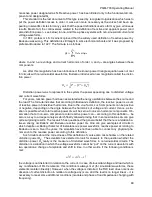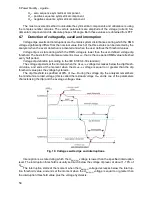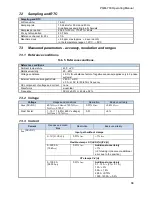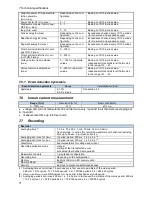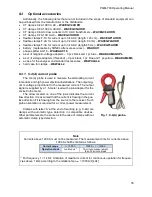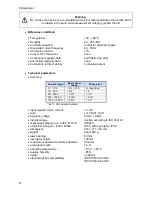
PQM-700 Operating Manual
62
6.9
Averaging the measurement results
Mains monitoring over a longer period of time means that a huge amount of data needs to be
collected. If analysis of such data is to be possible at all, it is necessary to introduce the mechanisms
which will reduce the data size to the values acceptable by both, humans and machines.
Lets us take the example of EN 50160 compliant power quality measurements. The basic mains
test period is one week. If all 200-millisecond RMS values were to be remembered, we would get
3.024 million measurements. Processing of such amount of data would be time consuming and
difficult.
Therefore, the averaging concept has been introduced which involves recording one value per
a specified time interval for the analysis purposes. For the EN 50160 standard, such time interval
is 10 minutes. In such case, the analyzer calculates an average 10-minute value on the basis of
about three thousand 200-millisecond values (approximately, because in reality the conventional
200-millisecond value is a 10/12-period value synchronized with the mains frequency). Each aver-
age voltage value is recorded every 10 minutes which gives “only” 1008 measurement results.
Fig. 22 presents the method according to which the PQM-700 analyzer determines the average
values at averaging intervals equal to or greater than 10 seconds with the 10-minute averaging
time. This method meets the requirements specified in IEC 61000-4-30:2009.
Fig. 22. Determining the averaging intervals equal to or longer than 10 seconds (with the
10-minute averaging).
The average values are synchronized with real time clock in the following manner. When the
clock measures a successive full multiple of the averaging period, the instantaneous 10/12-period
measurement is added as the last to the average value (
k-
th measurement in Fig. 22). Simultane-
ously, the ending averaging period is given a time stamp which relates to its end. The next 10/12-
period measurement is the first in a consecutive averaging period.
Averaging with times less than 10 seconds is somewhat different. Although, they are all ex-
pressed in time units (200 ms, 1 s, 3 s, 5 s), in reality they are measured in multiples of the mains
period. For example, selecting of a 3-second averaging period means averaging in the time equal
to 150/180 mains periods (fifteen 10/12-period measurements).
Summary of Contents for PQM-700
Page 85: ...85 Notes...

